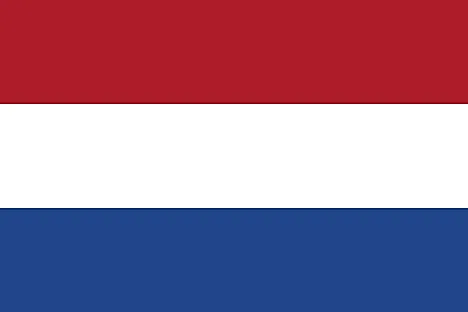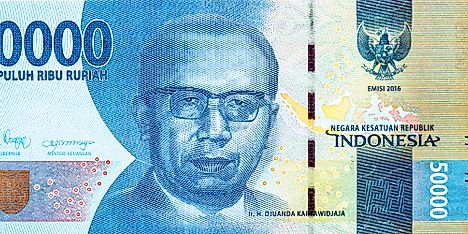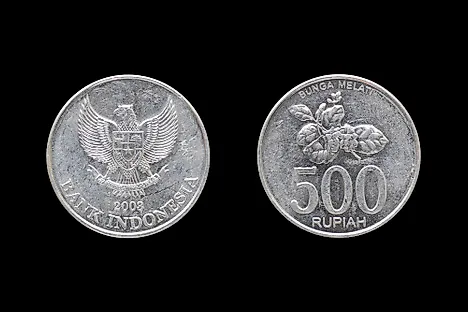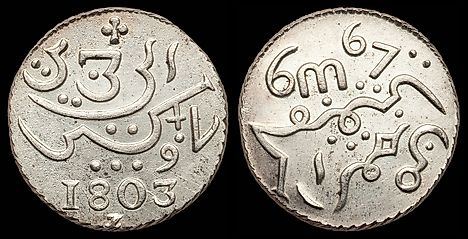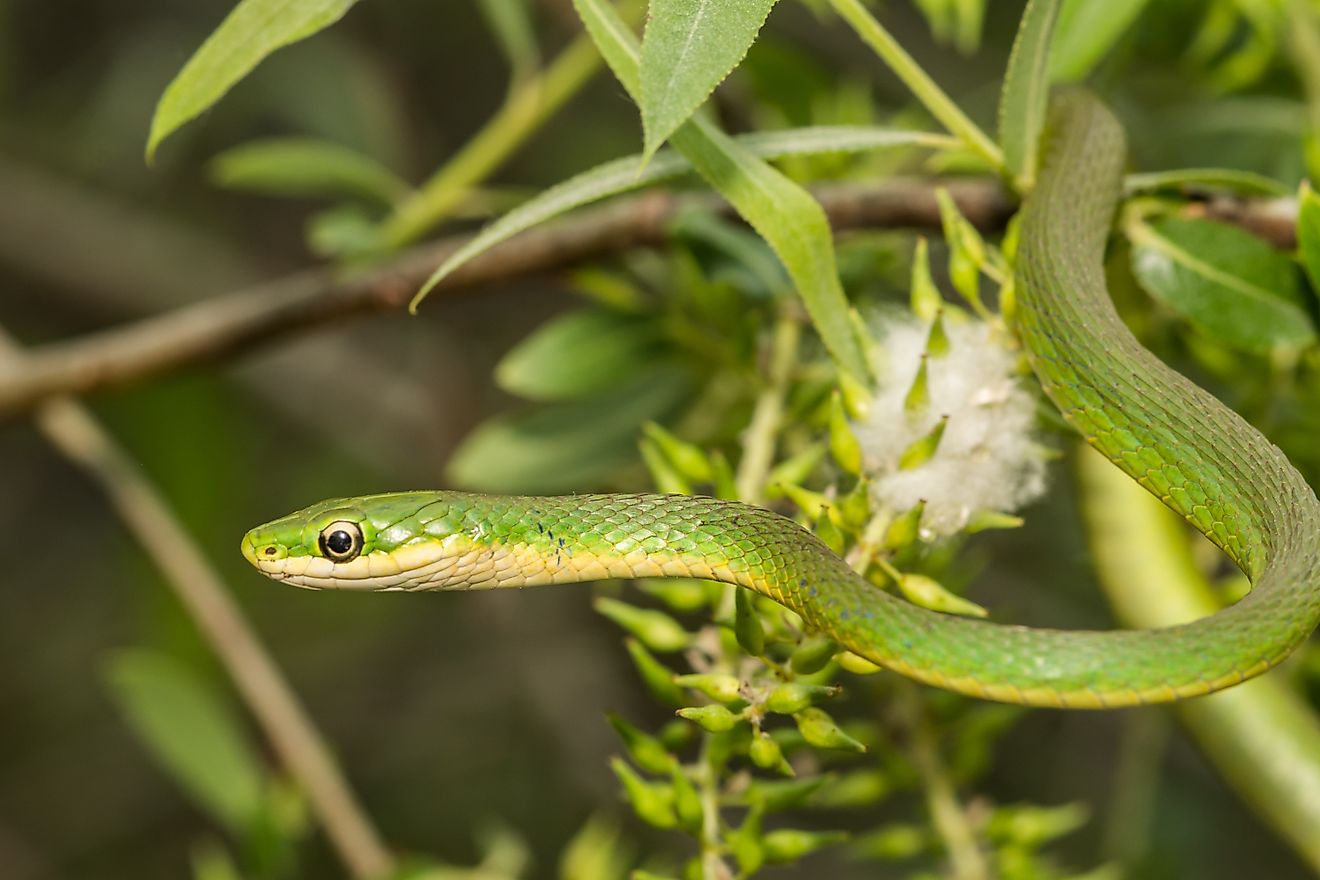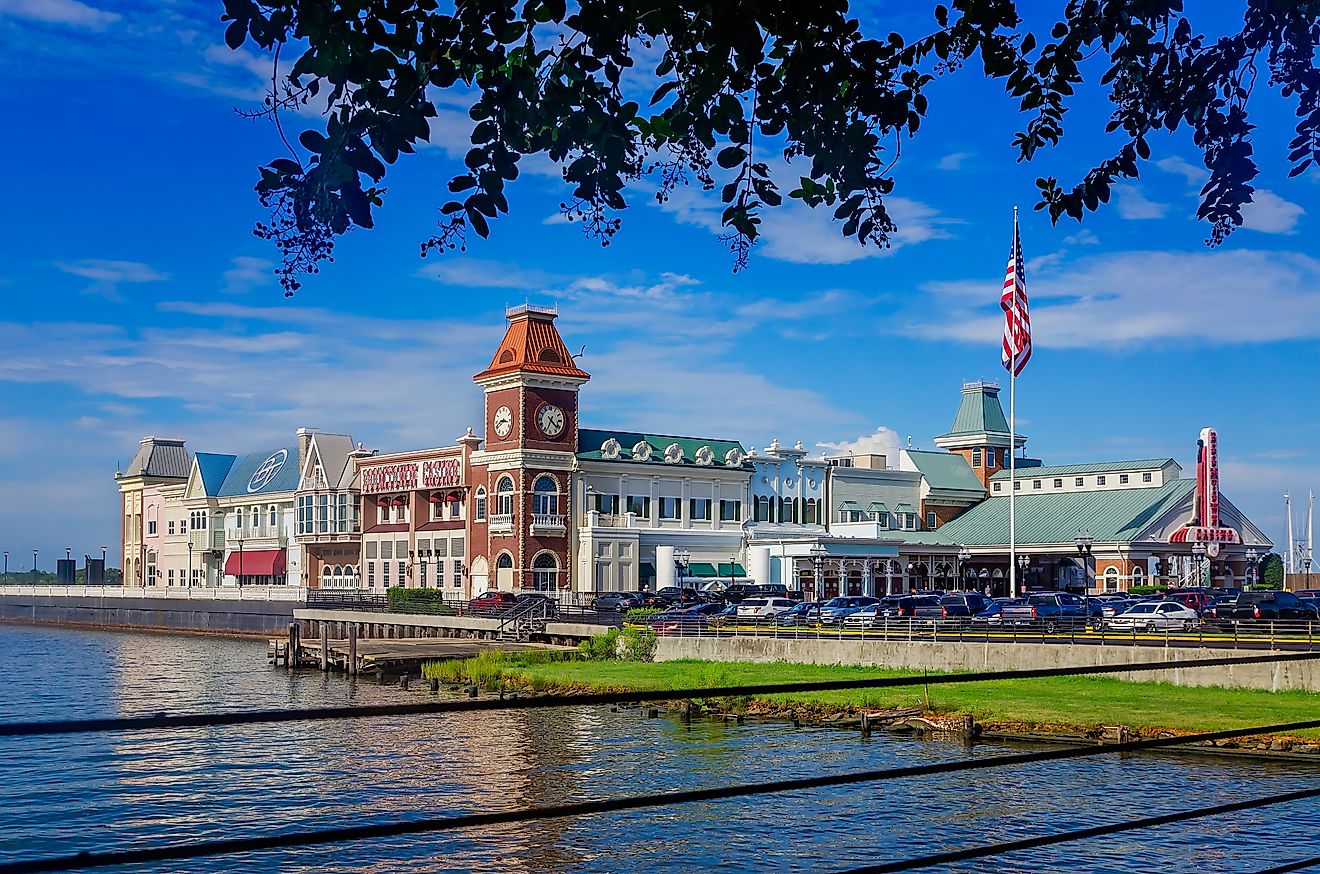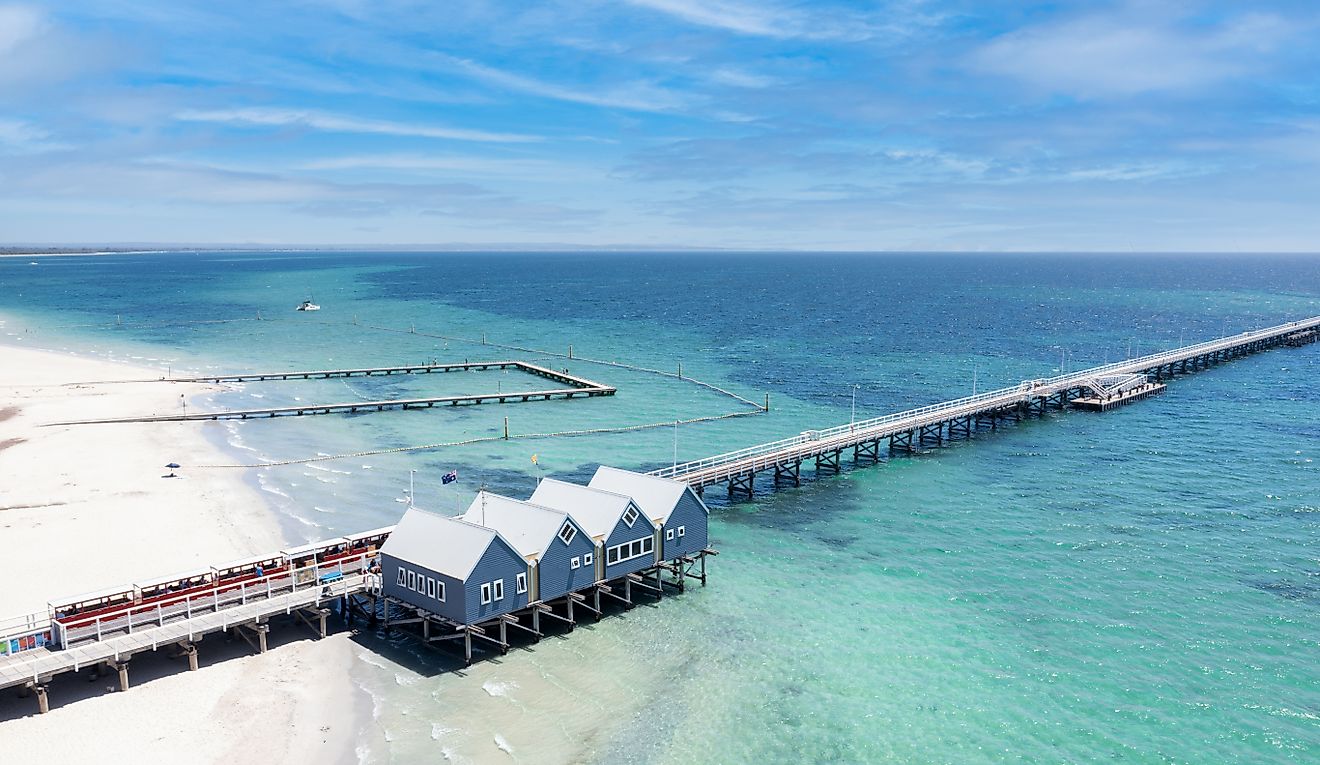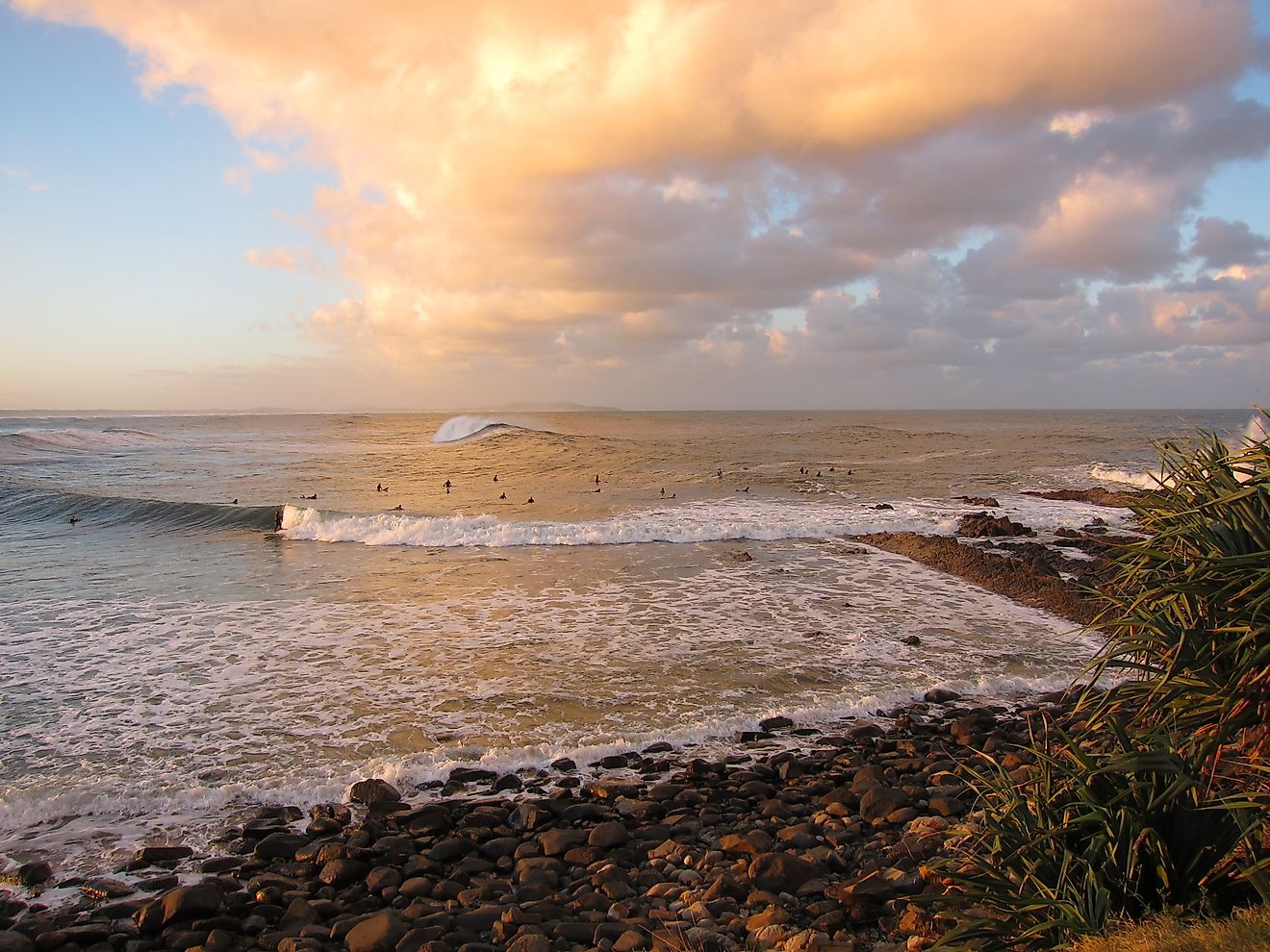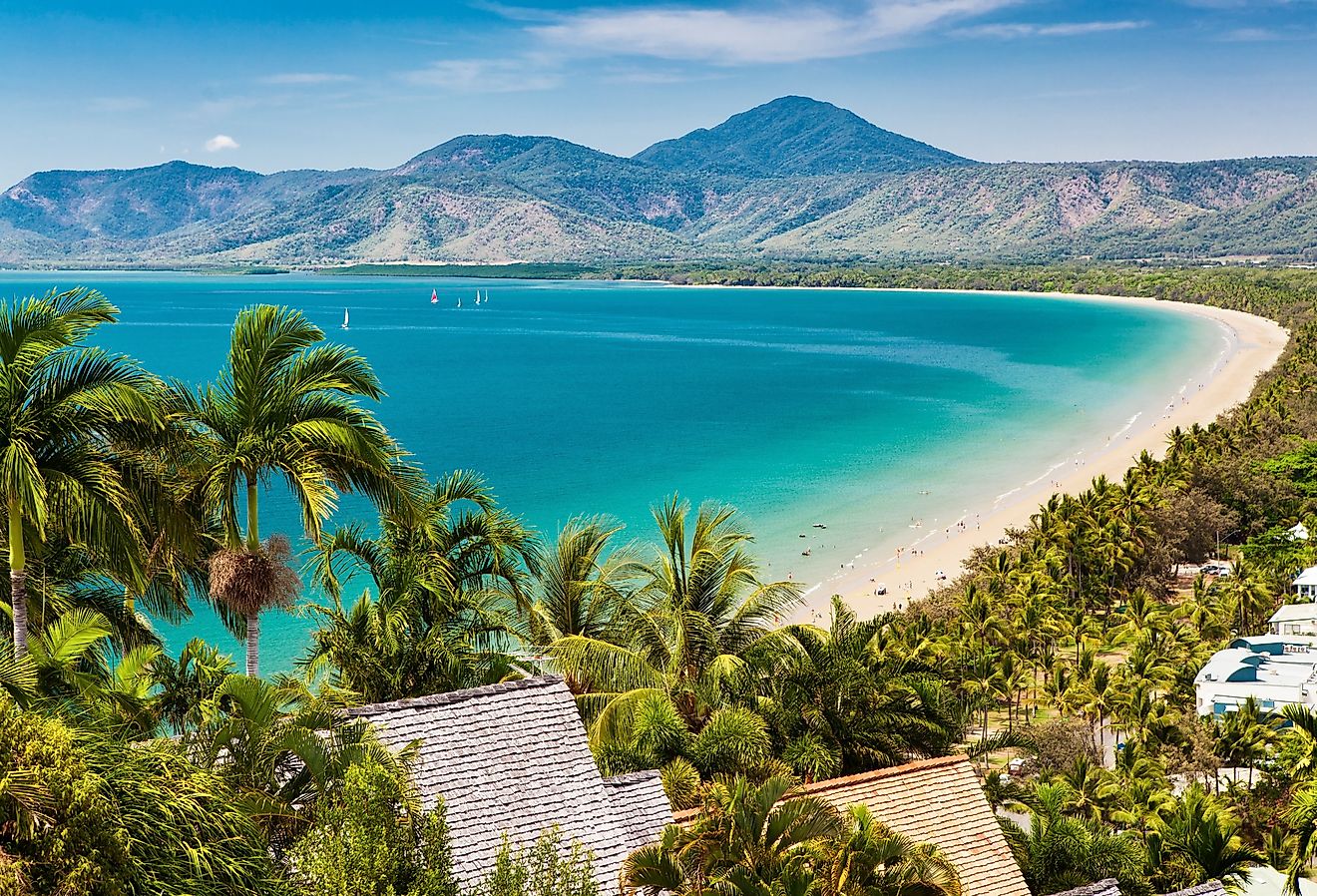Flags, Symbols, & Currencies of Indonesia
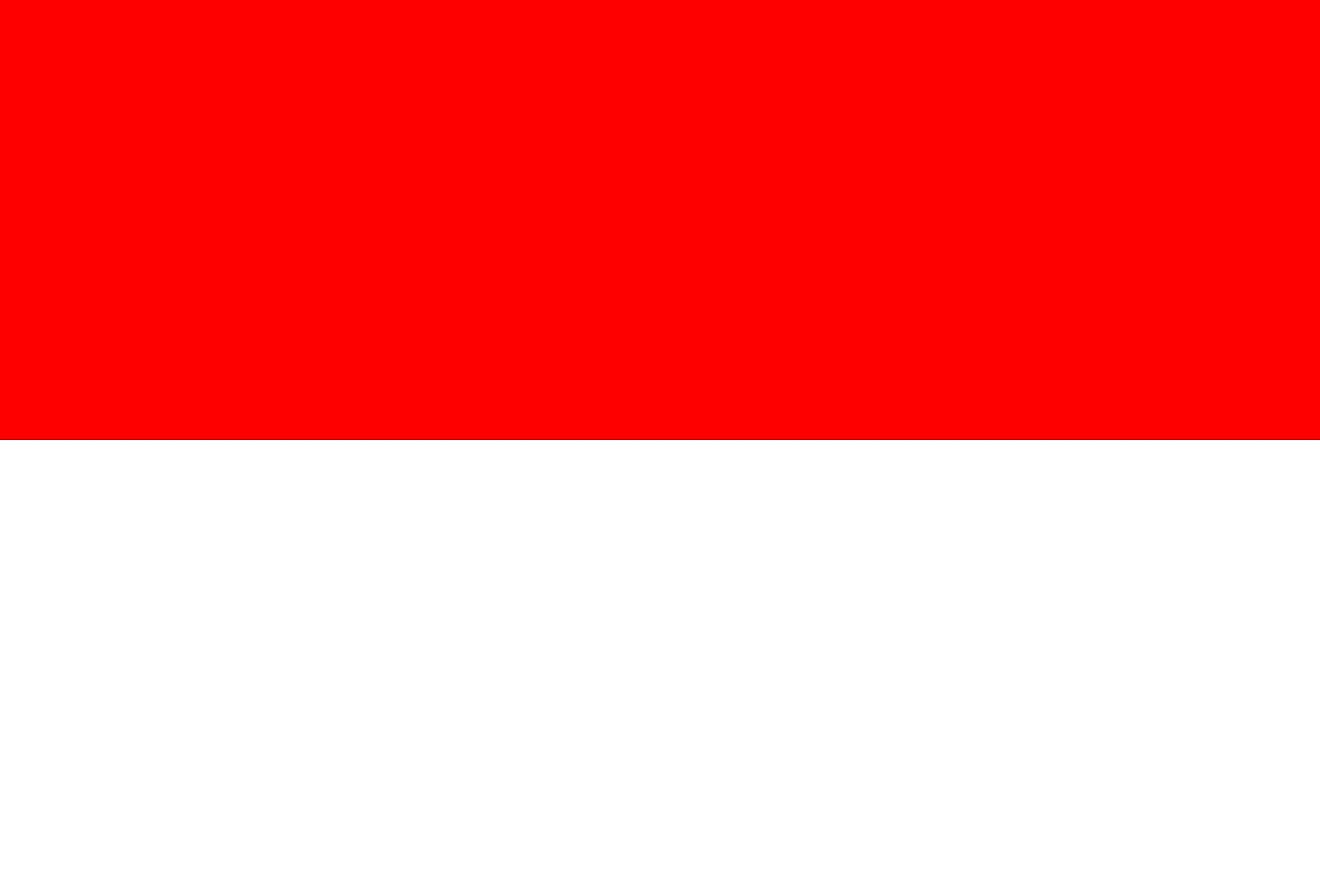
The national flag of Indonesia has a simple design with a height to width ratio of 2:3. It is a bicolor of two horizontal equl bands of red (top) iand white. The flag was first adopted and hoisted for the first time on August 17, 1945, following the reaing of Indonesian Declaration of Independence, and officially adopted in 1950. The day marked the beginning of the diplomatic and armed resistance of the Indonesian National Revolution against the Dutch colonial rule. It finally led to independence in 1949. Indonesia’s flag is graphically identical to the national flag of Monaco. The only difference between the two flags is in the ratio of the dimensions. Poland’s flag is also is similar in appearance but has the colors in the reverse direction with white on top and red on the bottom.
There are varied opinions as to the symbolic meanings of the red and white colors used in Indonesia’s flag. According to some, the colors are derived from the Majapahit Empire’s banner. It was a thalassocracy based on the Indonesian island of Java and ruled in the region from 1293 to 1500. Thus, the red stripe represents the body, while the white stripe represents the soul. However, records of the existence of the red and white pataka (an elongated flag hoisted on a bamboo pole) exist even prior to the rule of the Majapahit Empire. According to others, the red and white colors of the Indonesian flag symbolize Mother Earth and Father Sky, respectively, as per the Austronesian mythology. The second belief is more widespread in the Austronesian region and many flags used in the region have these colors.
History of the Flag
The colors on the flag of Indonesia were derived from Majapahit Empire's red and white colors. The red and white banners were used severally by the Buginese Kingdom and during the Java War. However, during the colonial era, the Dutch hoisted the colonial flag on the Island. The Dutch prohibited the use of the red and white banner throughout the island. The colonial flag was the tricolor flag of red (top), white, and blue horizontal bands. The colonial flag was used until December 1959. The red and white flag was adopted August 17, 1950
Symbols of Indonesia
National Coat of Arms of Indonesia

Called Garuda Pancasila, the national emblem of Indonesia is composed of a Garuda (large mythical bird) and heraldic shield. The five sections of the shield represent the five Pancasila principles of Indonesia's national philosophy, and the scroll in the Garuda's talons bears the national motto, "Bhinneka tunggal ika." ('Unity in diversity'). Garuda (mythical eagle) is used on the arms to invoke the pre-colonial Hindu Kingdom that dominated the island. The bird symbolizes power and strength while its gold color symbolizes glory and greatness. The feather on Garuda are arranged in a way that they invoke Indonesian independence day (August 17, 1945)
- 17 feathers on each wing
- 8 feathers on the tail
- 19 feathers below the shield
- 45 feathers on the neck
National Anthem
- Anthem Title: Indonesia Raya (Great Indonesia)
- Music composer and Lyricist: Wage Rudolf Supratman
- Date of Adoption: August 17, 1950
The national anthem of Indonesia is titled "Indonesia Raya." Although it has been the country's national anthem since proclamation of independence on August 17, 1945, it was officially adopted as the anthem on August 17, 1950. Wage Rudolf Supratman composed the song on October 28, 1928, during Indonesian Second Youth Congress in Batavia. This anthem gave birth to a nationalist movement in the archipelago to advocate for a united indonesia instead of split colonies.
Indonesia Raya
Indonesia, tanah airku
Tanah tumpah darahku
Di sanalah aku berdiri
Jadi pandu ibuku
Indonesia, kebangsaanku
Bangsa dan tanah airku
Marilah kita berseru
Indonesia bersatu!
Hiduplah tanahku, hiduplah negeriku
Bangsaku, rakyatku, semuanya
Bangunlah jiwanya, bangunlah badannya
Untuk Indonesia Raya
Indonesia Raya, merdeka! Merdeka!
Tanahku, negeriku yang kucinta
Indonesia Raya, merdeka! Merdeka!
Hiduplah Indonesia Raya!
Indonesia, tanah yang mulia
Tanah kita yang kaya
Di sanalah aku berdiri
Untuk selama-lamanya
Indonesia, tanah pusaka
Pusaka kita semuanya
Marilah kita mendoa
"Indonesia bahagia!"
Suburlah tanahnya, suburlah jiwanya
Bangsanya, rakyatnya, semuanya
Sadarlah hatinya, sadarlah budinya
Untuk Indonesia Raya
Indonesia Raya…
Indonesia, tanah yang suci
Tanah kita yang sakti
Di sanalah aku berdiri
Menjaga ibu sejati
Indonesia, tanah berseri
Tanah yang aku sayangi
Marilah kita berjanji
"Indonesia abadi!"
Selamatlah rakyatnya, selamatlah putranya
Pulaunya, lautnya, semuanya
Majulah negerinya, majulah pandunya
Untuk Indonesia Raya
Indonesia Raya…
Great Indonesia
Indonesia, cherished land!
'Tis for thee we shed our blood,
On guard for thee we stand,
In thee we put our trust
Indonesians, our people!
Each other we do uphold,
In declaration wholesale:
To each other be true!
Let her valiant people and her pure lands,
Let her mighty peaks and prodigious sands,
In body, in spirit, let them all arise,
For Indonesia the Great!
Indonesia the Great, be free! Be free!
These isles of ours beloved dearly!
Indonesia the Great, be free! Be free!
For Indonesia the Great!
Indonesia, land sublime,
Fore'er bountiful and free,
Where our roots we shall plant,
For millennia to stand
Indonesia, land of inher'tance,
Entrusted to us all,
For one thing we do ask,
Strengthened be our esperance!
Fertile are her fields, holy her soul
From Sabang to Merauke, hear the call!
With hearts awakened, with goodwill served,
For Indonesia the Great!
Indonesia the Great...
Indonesia, land so pure,
A land mighty with resolve,
To thee we pledge allegiance,
Our sole unending love
Indonesia, resplendent land,
Patriot love in us command,
Foremost in our hearts and minds,
Indonesia, fore'er to stand!
May her people, her land, may her peaks and her sands,
From sea to seas, in peace be,
May they all then advance, may they all then commence,
For Indonesia the Great!
Indonesia the Great...
The Currency of Indonesia is the Indonesian rupiah
Indonesia declared Bank Negara Indonesia as its central bank on July 5, 1946. In October of that year, the bank released Indonesia’s first official currency, referred to as the rupiah. The rupiah has undergone several revaluations due to massive inflation in the country. Currently, coins are available in denominations between 100 and 1000 rupiah. The banknotes come in denominations between 1,000 and 100,000 rupiah. Financial challenges and massive debt in the country have contributed to a decreased value of the Indonesian rupiah.
Limitations of the Indonesian Rupiah
As a result of the financial crisis of 1997 and 1998, the Indonesian rupiah suffered a massive loss and is yet to recover. In today’s financial markets, the rupiah's exchange rate with the dollar is estimated at 13,300 rupiah for 1 US dollar. The Indonesian rupiah is among the least valued currencies in the world, and most investors regard it as a very unstable currency.
History of Indonesian Currency
The first use of currency in Indonesia can be traced back to the 9th century during the Sailendra dynasty. The currency was in the form of gold and silver coins bearing the sandalwood flower image. Traders in the region also used strings of beads made by the Srivijaya Empire as a unit of exchange. In the 13th Century, Chinese merchants introduced copper coins to the Indonesian islands. The Chinese coins were designed with a hole at the center. Indonesians produced lead and tin coins inspired by the Chinese copper coins. The arrival of Europeans in the 15th century marked a new era of currency in Indonesia. The Dutchmen who colonized Indonesia introduced silver and gold coins, referred to as the gulden. In 1752, the first banknotes were issued in Indonesia. The newly issued banknotes quickly lost value because they lacked backing in coin form. When the Japanese invaded Dutch-controlled Indonesia in 1942, they brought their own supply of gulden currency. This resulted in an oversupply of money in Indonesia, and the inflation rate increased significantly. High rates of inflation continued to drag down Indonesia’s economy even after World War II.
Historical Currencies of Indonesia
Before Indonesia adopted the Indonesian rupiah, its official currency was the Dutch Indies gulden. Prior the the arrival of the European, the island used different payment methods in their transactions. The use of gulden began in 1602, following the formation of the United East India Company. The coins were mainly made of copper. In 1724, the Dutch duit were introduced from the province of Holland. The replacement of the Dutch administration by the British led to the introduction of silver rupees and gold rupees. However, the Dutch rule was fully restored in 1816 and the copper and duit coins continued circuating on the island. The Bank of Indonesia began minting rupiah notes to replace the gulden from 1953.
